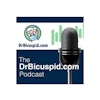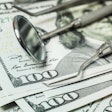A 6,500-year-old human mandible with trace remains of a beeswax filling is possible evidence of ancient dentistry, according to a study published in PLOS One (September 19, 2012).
While it is unclear whether the beeswax was applied shortly before or after the person's death, burial practices where beeswax is placed on the teeth of a deceased have never been documented in the area, according to the study authors, from of the Abdus Salam International Centre for Theoretical Physics.
In addition, the beeswax could have been intended to reduce pain and sensitivity from a vertical crack affecting the inner enamel and the coronal dentin and extending into the top of the pulp chamber of the tooth, they suggested.
The subject's teeth had severe wear that may have resulted from nonalimentary activities like weaving, which was typically performed by Neolithic females, the researchers added.
"This finding is perhaps the most ancient evidence of prehistoric dentistry in Europe and the earliest known direct example of therapeutic-palliative dental filling so far," said co-author Federico Bernardini.















